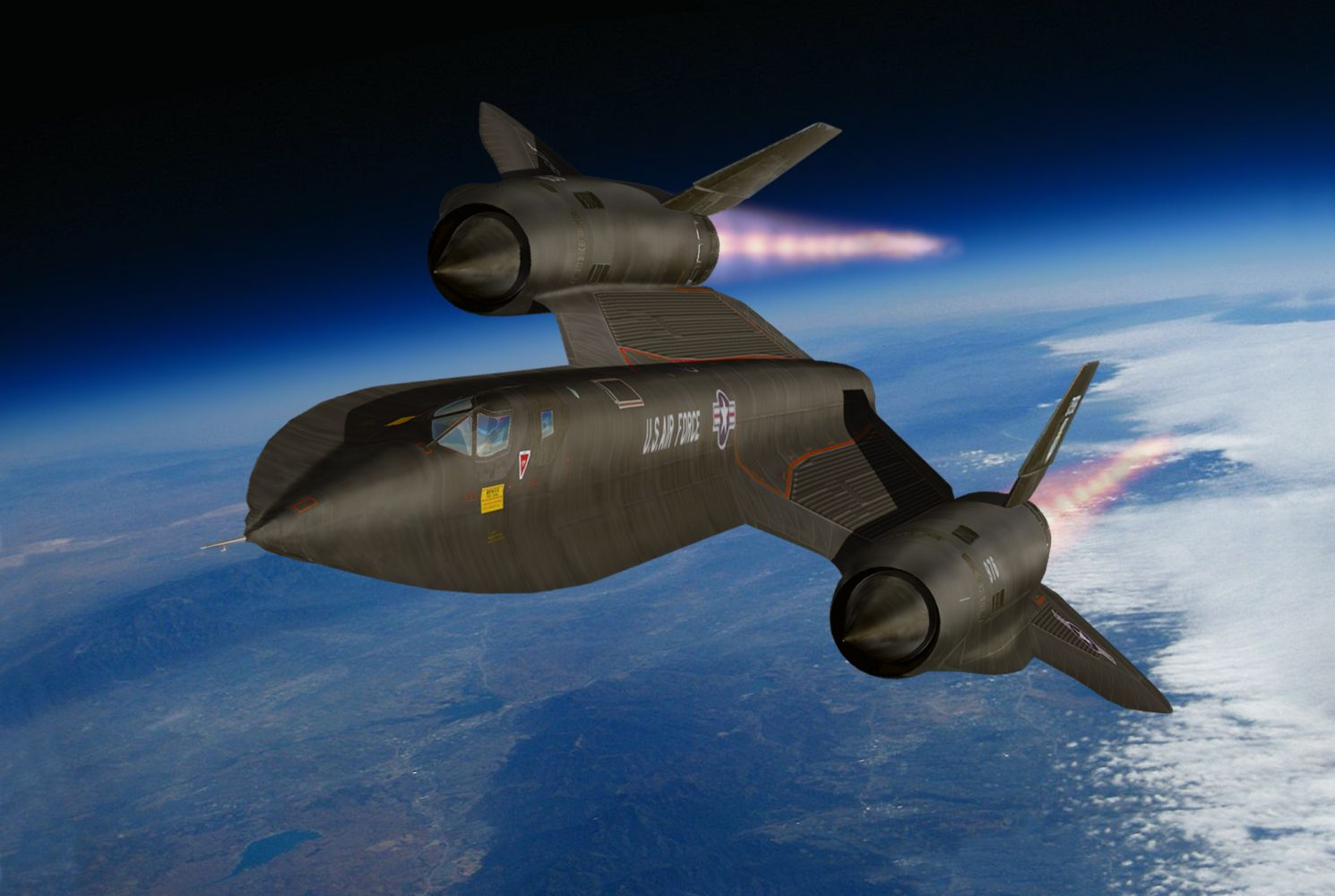The Saab J37 made history: During its nearly 25 years in service, the Lockheed SR-71 “Blackbird” set numerous speed records, and on July 28, 1976, the aircraft reached an amazing 2,193.167 mph (3,529.56 km/h).
Flying at roughly 36.55 miles per minute or 3,216.4 feet per second, it was faster than a bullet fired from the World War II-era M1 Garand rifle — which had a muzzle velocity of 2,800 feet per second.
The SR-71 earned a reputation that no aircraft could catch it and that it could even outrun missiles. While a dozen were lost due to accidents, no Blackbird was ever shot down by the enemy. In fact, only one aircraft even has the distinction of achieving a radar lock on the fast-flying United States Air Force reconnaissance plane.
It wasn’t a Soviet interceptor such as the MiG-25 however, but rather the Swedish-made Saab J37 Viggen fighter that successfully achieved a missile lock and visual contact with the speedy spy plane.
The Saab J37 and the Baltic ExpressA Swedish Air Force Saab Viggen arrives at RAF Fairford in July 1993. Paul Jarrett/PA Images via Getty Images
During the 1980s, the SR-71’s mission involved pre-determined high-altitude flight paths toward strategic targets, and among these was the “Baltic Express,” which required the aircraft to fly through a small gap of international airspace near Sweden.
When the SR-71 began its missions in the 1960s, it was at the pinnacle of stealth technology, and few radar systems could hope to track the aircraft. By the 1980s, however, new and more advanced ground-based systems were able to spot the aircraft.
Such was the case on the Baltic Express. As the SR-71 entered a specific way-point near Copenhagen, it would trigger Swedish air-defense radar. Stockholm maintained a strict policy of neutrality during the Cold War, yet expected that if an invasion were to come it would be from the Soviet Union. However, the Swedish government couldn’t be seen allowing US spy planes to enter its airspace, and hence there was the expected exercise that included the launch of interceptor aircraft.
Sweden conducted hundreds of Quick Reaction Alert (QRA) missions per year to intercept any unidentified aircraft approaching its airspace. The QRA targets came from both Warsaw Pact and NATO nations and usually were just flying close to Swedish airspace over the Baltic Sea or the Gulf of Bothnia.
When the SR-71 began its Baltic Express flights, the Saab J35F Draken was deployed to intercept the fast-flying reconnaissance aircraft, but it wasn’t up to the task.
A Swedish Air Force Historic Flight Viggen SE-DXO in Ireland in July 2018. Andrew Surma/NurPhoto via Getty Images
The United States Air Force pilots likely believed the same about the Saab J37 Viggen too. However, it was equipped with highly advanced weapons targeting and radar systems, which allowed for greater tracking and missile-lock capabilities. The SR-71 still presented an immense challenge, but it seemed that the Swedish pilots simply adapted their tactics accordingly.
It involved scrambling from their bases, achieving an altitude just below the Blackbird, and then — while flying at twice the speed of sound — climbing to fly directly toward the SR-71 in a head-on approach. Whereas typical intercepts involved approaching from behind, allowing missiles to have a better chance to lock on, the Viggen was equipped with a Skyflash missile that was capable of a radar lock-on from the front.

In January 1986, the tactics paid off. Swedish pilot Per-Olof Eldh scrambled in his Saab J37 Viggen fighter and started the head-on attack protocol. He successfully lined up with the Blackbird’s flight path and gained full missile lock on the approaching SR-71.
Eldh didn’t fire of course, and the two planes harmlessly cross paths and gained visual contact with one another. But it proved to be the first successful interception and effective lock on the fastest operational aircraft in the world. Eldh went on to achieve five more successful SR-71 interceptions using such unorthodox tactics.
Now a senior editor for 1945, Peter Suciu is a Michigan-based writer who has contributed to more than four dozen magazines, newspapers and websites. He regularly writes about military hardware and is the author of several books on military headgear including “A Gallery of Military Headdress,” which is available on Amazon.com. Peter is also a contributing writer for Forbes.








